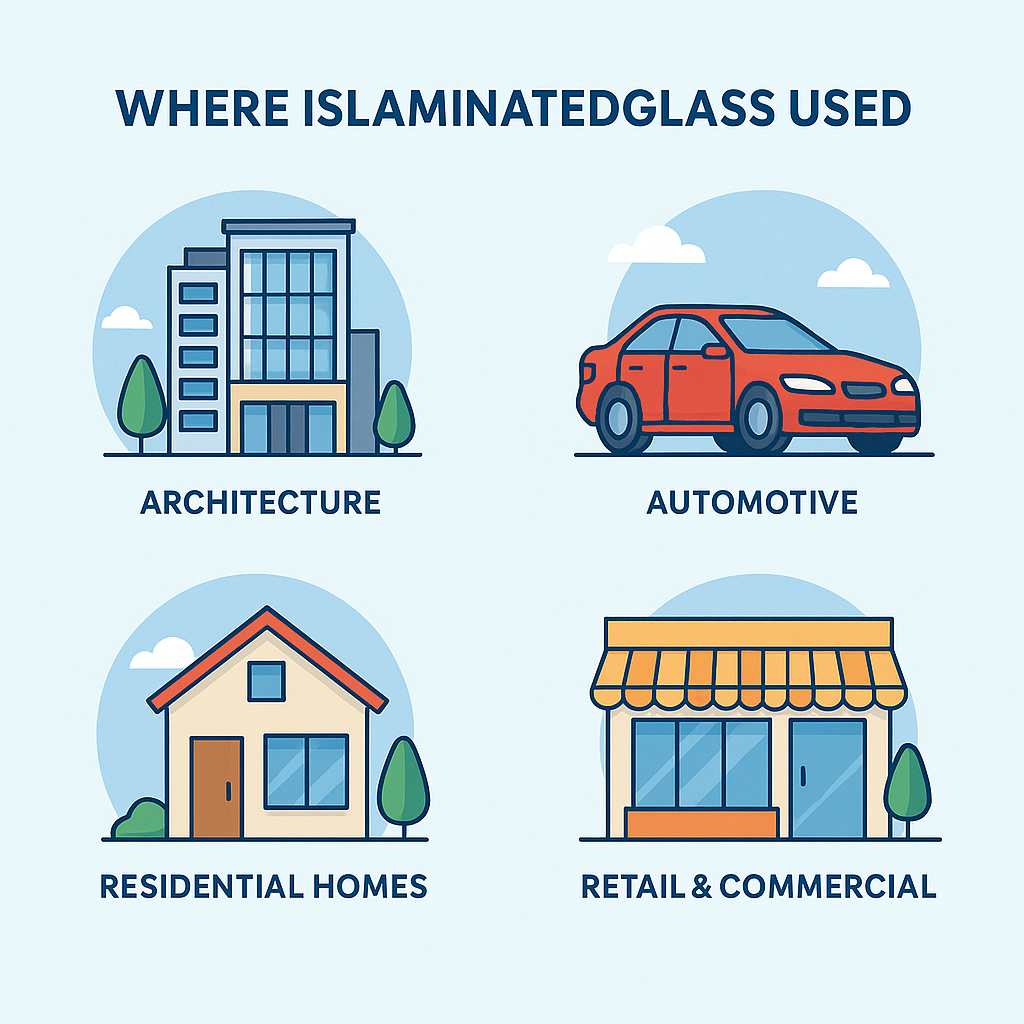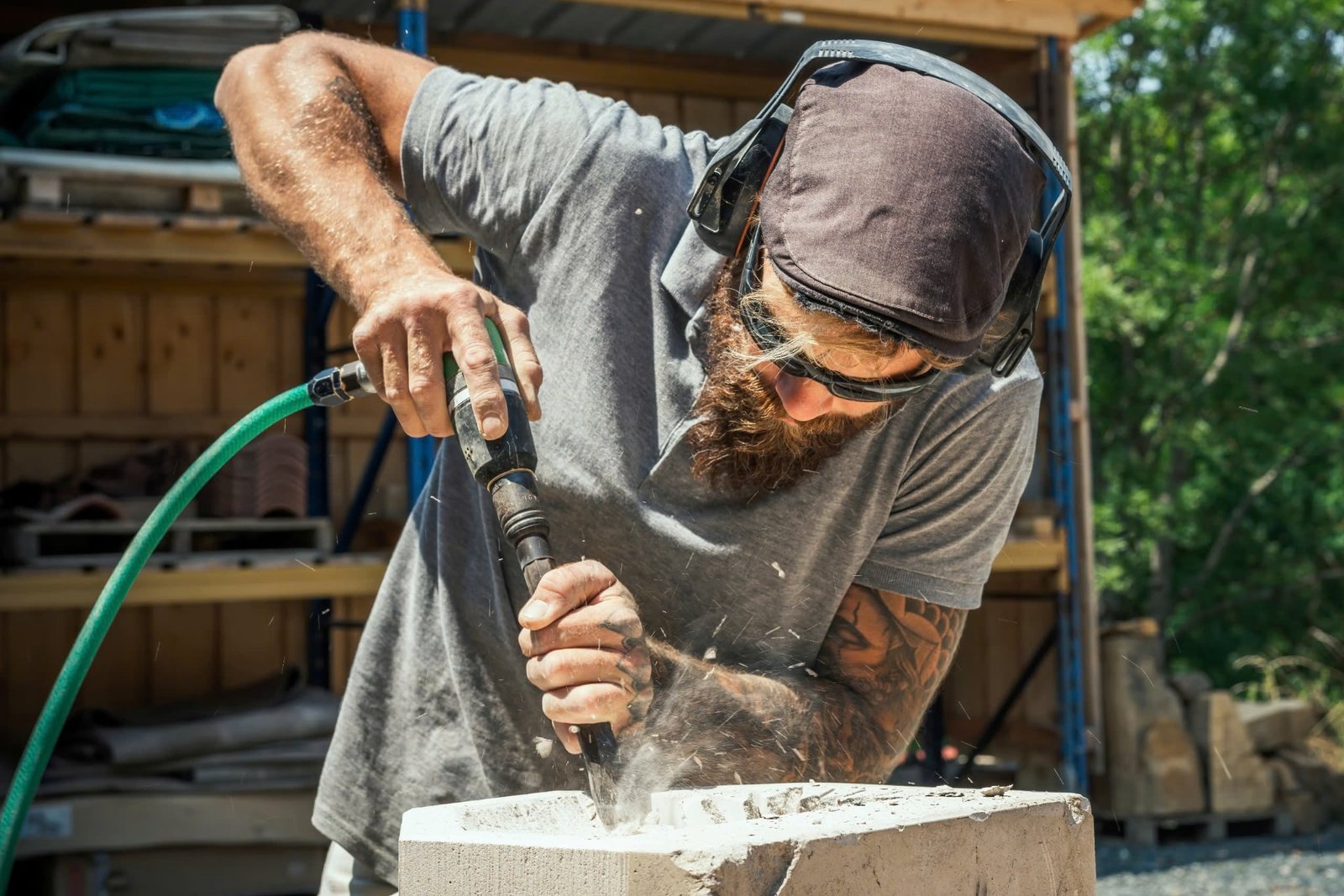
But exactly where is laminated glass used, and why is it preferred over traditional or tempered glass in so many areas?
In today’s world of smart architecture and safety-first design, laminated glass plays an essential role. From commercial skyscrapers to personal vehicles, laminated glass is everywhere—and for good reason. It combines durability, safety, acoustic control, and UV protection, making it a go-to choice for both structural and aesthetic applications.
But exactly where is laminated glass used, and why is it preferred over traditional or tempered glass in so many areas?
Let’s explore the key industries and environments where glass laminated solutions are shaping safety, comfort, and design excellence.
What Is Laminated Glass?
Before diving into applications, it’s important to understand what laminated glass is.
Laminated glass is a type of safety glass made by sandwiching a flexible interlayer—typically PVB (polyvinyl butyral) or EVA (ethylene vinyl acetate)—between two or more layers of glass. This structure gives laminated glass a unique ability to hold together when broken, significantly reducing the risk of injury and damage.
For a deeper look at laminated glass structure and features, visit:
🔗 Laminated Glass
Where Laminated Glass Is Used: Key Applications
1. Architecture and Construction
Laminated glass is widely used in buildings for both exterior and interior applications due to its strength, safety, and aesthetic options.
- Windows and doors: Especially in high-rise buildings, laminated glass offers protection from wind pressure, burglary attempts, and debris impact.
- Curtain walls and facades: Enhances visual appeal while providing UV filtering, acoustic insulation, and storm resistance.
- Skylights and canopies: Prevent falling glass in case of breakage.
- Balcony railings and glass floors: Adds safety without obstructing views.
- Interior partitions: Offers soundproofing and transparency in office spaces.
These applications are often governed by building codes that require safety laminated glass in high-risk areas such as overhead installations and ground-floor entry points.
2. Residential Homes
In private homes, laminated glass enhances comfort, safety, and energy efficiency.
- Noise reduction windows: Ideal for homes near highways, airports, or city centers.
Learn more here:
🔗 Laminated Glass with Sound Reduction - UV-resistant glass panels: Protects furniture, flooring, and artwork from sun damage.
- Security glass doors and windows: Delays or prevents forced entry.
- Shower enclosures and glass staircases: Used for both safety and design impact.
3. Automotive Industry
One of the most well-known uses of laminated glass is in automotive windshields. It’s been a regulatory requirement for decades in many countries.
- Front windshields: Prevents shattering during collisions, reducing injury risks.
- Sunroofs and rear windows (in some models): Adds structural integrity.
- Noise-reduction cabins: Laminated glass with acoustic interlayers is increasingly used in luxury vehicles to create quieter rides.
4. Retail and Commercial Spaces
Glass laminated panels are standard in modern retail environments due to their transparency, safety, and design flexibility.
- Storefront windows and display cases: Prevents smash-and-grab theft while showcasing products.
- Glass walls and entrances: Creates open, inviting spaces while maintaining security.
- Bank counters and jewelry shops: Often use multi-layered laminated glass for bullet resistance.
5. Public Buildings and Institutions
In high-traffic, high-security environments, laminated glass is essential for ensuring safety and compliance.
- Hospitals and clinics: Quiet zones created with acoustic laminated partitions.
- Schools and universities: Safety glazing required in corridors and gyms.
- Museums and galleries: Protects artifacts from UV light and break-ins.
- Airports and transit stations: Used in terminal facades and noise-reducing panels.
6. Soundproof Rooms and Studios
Laminated glass is a preferred material for sound insulation in:
- Recording studios
- Podcast booths
- Executive conference rooms
- Hotel suites and spas
Thanks to its interlayer, laminated glass dampens vibrations and sound waves, delivering better acoustics without compromising visibility.
🔗 Want better acoustic performance? Explore: Laminated Glass with Sound Reduction
7. Specialty and Custom Design Projects
Architects often choose laminated glass for its aesthetic versatility and structural integrity:
- Colored laminated glass panels: Adds personality to facades or interiors
- Printed interlayers: Used in branded glass walls or custom art panels
- Switchable laminated glass: Turns opaque at the flip of a switch for privacy
Why Laminated Glass Is Preferred in So Many Areas
Laminated glass isn’t just used for safety—it offers several benefits that make it a first choice:
- Shatter resistance: Reduces injury risk in public and residential spaces
- Noise reduction: Makes environments quieter and more comfortable
- UV protection: Blocks up to 99% of harmful rays
- Security: Deters intrusion with impact-resistant structure
- Fire resistance: Available in fire-rated variants for added protection
Cost Considerations and Availability
The laminated glass price depends on several variables:
- Glass thickness (e.g., 6.38mm, 10.76mm)
- Interlayer type (standard, acoustic, decorative)
- Size and complexity of panels
- Certifications (e.g., hurricane-rated, bullet-resistant)
Estimated Prices:
- Basic laminated glass: $25–$35/m²
- Acoustic/interior laminated glass: $40–$60/m²
- Decorative or custom laminated glass: $60–$100+/m²
To determine accurate costs, contact certified laminated glass manufacturers or local suppliers for quotes and samples.
Target Keywords and Phrases
- where laminated glass is used
- laminated glass applications
- glass laminated panels for architecture
- safety laminated glass for buildings
- laminated glass in cars and homes
- what is laminated glass used for
- laminated glass in public spaces
- custom laminated glass uses
- laminated glass price per square meter
- laminated glass manufacturers near me
Conclusion
From homes and hospitals to cars and curtain walls, laminated glass is an indispensable material that blends function, form, and safety. Whether you’re aiming to reduce noise, protect against impacts, or design visually stunning spaces, laminated glass delivers.
It’s not just glass—it’s peace of mind wrapped in performance.
Want to learn more about the science behind laminated glass?
🔗 Laminated Glass

